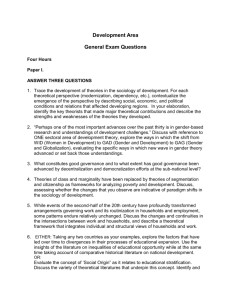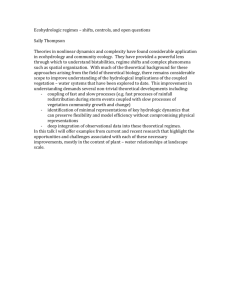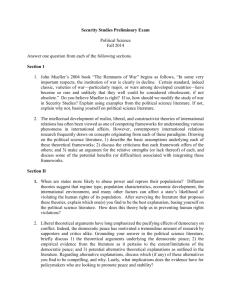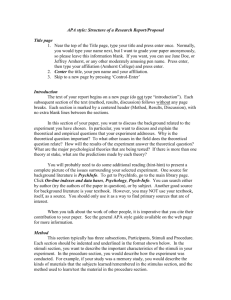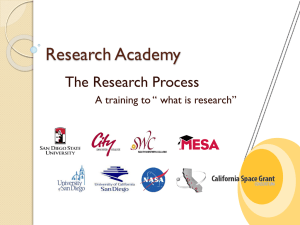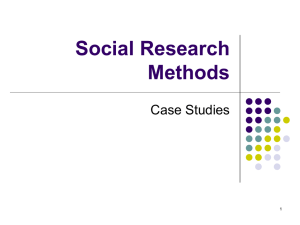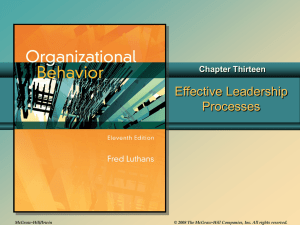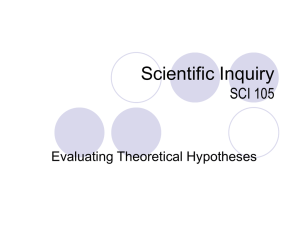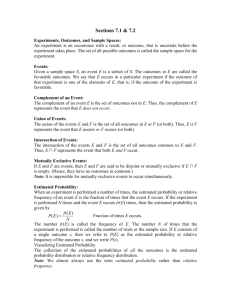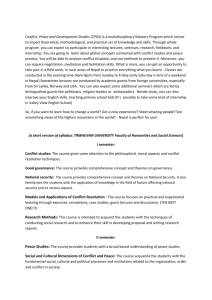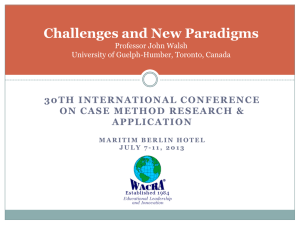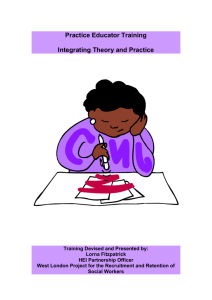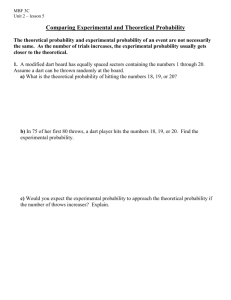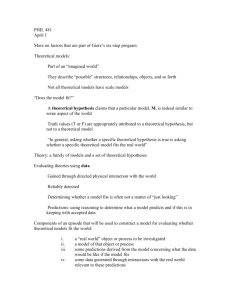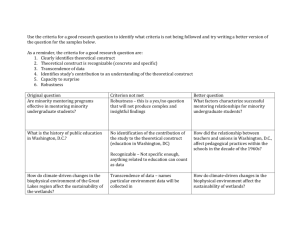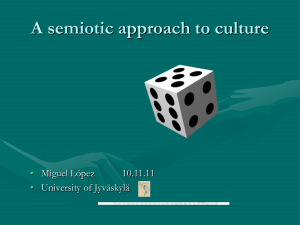How to position theory in research conceptualisation and analysis
advertisement
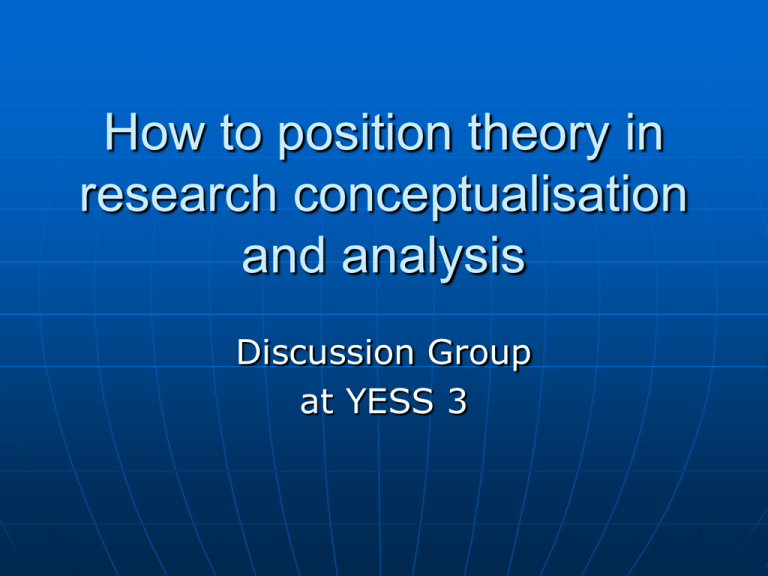
How to position theory in research conceptualisation and analysis Discussion Group at YESS 3 How to position theory in research conceptualisation and analysis. What do we mean by “theory”? Why is theory important in research? How do we use theory in analysis? Each person will be asked to say a few words about theory or theories in their own research. Some people will have well developed theoretical ideas. Others will be only just starting to think about theory. Some people may be confused or hesitant, having many questions but few clear ideas. This is fine. It is a difficult area and we will address some very basic questions. Different kinds or levels of theory, e.g. Ontological and epistemological considerations: • What kinds of knowledge are we dealing with? • How do we think about knowledge? What does it mean to learn and to teach, to do research? • grand theory, • more specialised or localised theories, • personal theory. One of our aims will be to expose implicit theoretical thinking. We will try to aim for each person to have a clearer theoretical statement related to their research by the end of the session. 1. Individual thinking 5 minutes: Write down some of your first thoughts about theory in your research. (e.g., what you know: theoretical statements, questions; OR something about what you don’t know, what is difficult) 10 minutes Talk to the person(s) next to you about what you have written 2. Starting to Discuss Who are you? 1. I have written down something about my theory (even if not very Examples well expressed) 2. I have tried to write something about my own theory but it is difficult because … Reasons 3. I can’t get started, because … Research Design Research paradigm Theoretical perspectives Research questions Research Strategy Research Methods Ontology & Epistemology Starting from a given example: What kinds of knowledge are involved? What can we say about what exists? What can we say about truth? Discussion in small groups – 15 minutes Discussion in plenary … leading to thinking about paradigms Example 1 Studying the learning of multiplication by students in primary school • Knowledge of multiplication • Knowledge about children’s learning How are multiplication and children’s learning defined and recognised? What research strategy will be used and what does this assume about nature of knowledge, existence and truth? Example 2 Studying reflective teaching What do we mean by reflective teaching How is “reflective” defined or recognised? What research strategy will be used and what does this assume about nature of knowledge, existence and truth? Example 3 Multimodality within the classroom space (APC space) (Vygotskian theory – semiotic mediation) Actions, productions, interactions (communication) What why how hence • Actions: can see/hear and describe, agree (speech, gestures, inscriptions … ) • Productions: interpretations from actions, with evidence (e.g. Eleanore) (Interiorisation?) • Interactions/Communication – what do we see? What interpretations? What evidence? Semiotic bundle: theoretic object Knowledge Theory External, objective, given by a higher authority (e.g., positivism) Human, constructed by the individual (e.g., constructivism) Human, growth through activity, practice, culture (e.g., sociocultural theories) Types of theory Grand Theory e.g. Constructivism A focus on the cognitive processing of the human individual: coming to know as a constructive process (Piagetian) Sociocultural Theory A focusing on knowledge as a part of social practice, human interaction, a fundamental part of human activity. Individual knowledge as derivative of social knowledge (Vygotskian) Particular theoretical perspectives Theory of didactic situations (Brousseau) APOS theory (Dubinsky) The knowledge quartet (Rowland) • Foundation • Transformation • Connection • Contingency Semiotic bundle (Arzarello)
